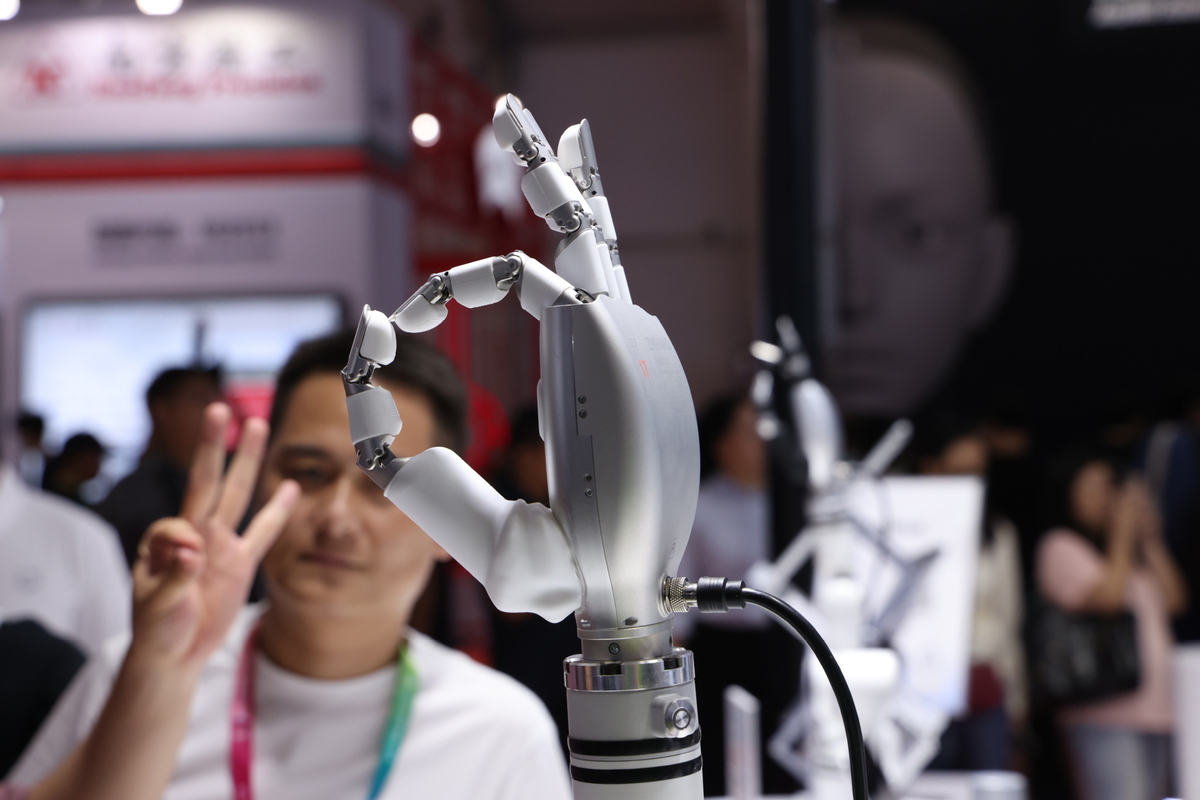Humanoid robots seen as pivotal future phenomenon


China is sharpening its focus on humanoid robots as a pivotal industry to fuel economic growth and cement its status as a global innovation pioneer, officials, experts and company executives said on Friday.
The comments came as humanoids are taking center stage at the 2025 World Robot Conference, which opened in Beijing on Friday.
More than 100 cutting-edge robotics products premiered at the event, at which enthusiastic crowds witnessed humanoid robots playing soccer, sparring in boxing matches, and collaborating seamlessly to tighten bolts on automobiles — all of whom showcased good coordination.
Wan Gang, president of the China Association for Science and Technology, said China places strategic emphasis on humanoid robotics as a future-oriented industry, given its potential pivotal role across diverse scenarios, including manufacturing, logistics, security household services, education and healthcare.
"This focused approach not only can stimulate consumption, but also spawn new industries, expand employment, advance economic reform and elevate public well-being," Wan said.
Xin Guobin, vice-minister of industry and information technology, said, "Innovative resources worldwide are converging on the robotics sector at an unprecedented pace."
Xin said industry leaders from the automotive and home appliance sectors are actively expanding into robotics research and development, and AI enterprises are scrambling to develop large language models, or "brains", for robots to make them smarter.
"This wave of innovation represents not merely a technological leap, but a profound transformation of productivity," Xin added.
China has retained its position as the world's largest market for industrial robots for 12 consecutive years. Meanwhile, the country accounted for two-thirds of global patent applications in robotics in 2024, according to the ministry.
Regarding industrial production, China remains the world's largest robotics manufacturer.
Industrial robot production surged from 33,000 units in 2015 to 556,000 units in 2024, while service robot output reached nearly 10.52 million units, representing a 34.3 percent year-on-year increase, latest data showed.
"China's thriving robotics industry relies on the synergy of global scientific wisdom and close collaboration across international supply chains. We are willing to work with the international community to foster an open, cooperative and innovative ecosystem for the global robotics sector," Xin said.
Qiao Hong, president of the World Robot Cooperation Organization and an academician at the Chinese Academy of Sciences, said the country has unique advantages in humanoid robots, as it has established a core foundation of technology for large-scale, cost-effective production of high-performance robotic systems.
Juha Roning, vice-president of research at euRobotics and a professor of embedded system at the University of Oulu in Finland, who is attending the conference for the third time, said, "China is very advanced in the development of humanoid robots, because many investments are made here and lots of talent thrives here."
Roning said a prominent focus of this year's conference is an obvious shift to the application of humanoid robots. "Previously, it was more about engineering work, like how to make controlling systems more accurate. Today, there are more products available for commercial use. That's quite impressive," he said.
Zhang Zhizheng, co-founder of Beijing Galbot, a robotics startup, said its humanoid robots are already operating autonomously in over 10 pharmacies in Beijing, performing complex tasks like retrieving medicines from crowded shelves and delivering orders to night-shift couriers. "We plan to open 100 such stores nationwide by the end of this year," Zhang said.




































